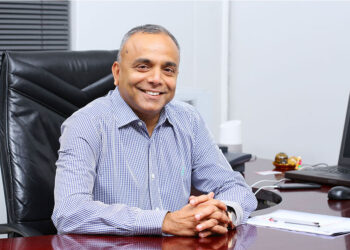• TSAONE SEGAETSHO
Electricity generation recorded by the state energy utility, Botswana Power Corporation (BPC), continues to fall, a trend that has been reported from the last quarter of 2023 to the first quarter of 2024.
BPC has acknowledged that the decrease in electricity generation is due to operational difficulties at the Morupule B Power Plant. Authoritative and recent information indicates that throughout the first quarter of 2024, even until this week, Morupule B has been struggling.
The news of Morupule B being in a poor state and receiving treatment is also supported by the Gross Domestic Product report for the first quarter of 2024, which noted a decline in the real value added of Mining and Quarrying by 24.8 percent, mainly influenced by the decrease in coal and other minerals. According to the report, BPC required less coal due to the remediation of the Morupule B power plant, and another boiler had gone into maintenance.
The difficulties at Morupule B have led to a recent decline in electricity generation. According to the recently released Botswana Index of Electricity Generation (IEG) for the first quarter of 2024, the IEG stood at 188.2 during the first quarter of 2024 compared to 211.9 recorded during the same period in 2023, reflecting a decrease of 11.2 percent. However, from a quarter-on-quarter perspective, there was an increase of 20.9 percent, from the index of 155.6 during the fourth quarter of 2023.
BPC has submitted the Index of Electricity Generation from the first quarter of 2013 to the first quarter of 2024, showing there has been an improvement in local electricity generation as evidenced by the upward trend, albeit with fluctuations over the years. These fluctuations expose the instability and volatility of electricity generation in Botswana.
Botswana generates electricity from coal, which supplies about 29% of the country’s demand on average. Ten years ago, 71% was imported mainly from South Africa (Eskom), but the tables have turned with the country facing power crises, as Zambia has become the biggest exporter of Botswana’s electricity.
During the first quarter of 2024, the physical volume of imported electricity increased by 49.1 percent (135,041 MWH), from 274,978 MWH during the first quarter of 2023 to 410,020 MWH. According to Stat Bots, the amount of imported electricity decreased by 20.9 percent (108,649 MWH) during the first quarter of 2024 compared to the previous quarter, from 518,669 MWH to 410,020 MWH. Stat Bots said the downward trend indicates that the country’s continued efforts to generate adequate electricity to meet domestic demand have, on average, led to a declining reliance on electricity imports compared to the past.
In the first quarter of 2024, the Zambia Electricity Supply Corporation Limited (ZESCO) was the main source of imported electricity at 48.8 percent of total electricity imports. Second in order is the Namibia Power Corporation (Nampower) which accounted for 17.7 percent, while the remaining 16.5 and 12.0 percent were sourced from Electricidade de Mozambique (EDM) and Eskom, respectively.
Botswana moving towards ‘clean’ alternatives
According to the International Renewable Energy Agency (IRENA) Botswana Energy Profile in 2021, the majority of the population has access to electricity, which has spiked demand for electricity generation. However, with the high demand for electricity in Botswana, there is dwindling production or generation of what is seen as an alternative to coal-generated electricity, namely renewable energy. According to IRENA, renewable energy generation and supply to the population fell from close to 30 percent in 2021 to almost non-existent by 2023. This is despite IRENA findings in 2021 showing that Botswana has more solar and wind generation and distribution potential compared to the world.
Last week, the World Bank’s Board of Directors approved its first lending operation supporting renewable energy development in Botswana. According to the World Bank, a project called the Botswana Renewable Energy Support and Access Accelerator (RESA), aiming to transform the country’s energy landscape through enabling renewable solutions and improved electricity access, was approved last Thursday.
The World Bank also revealed that the project is financed through a loan of $88 million from the World Bank as well as a $30 million loan and a $4 million grant from the Green Climate Fund’s Sustainable Renewables Risk Mitigation Initiative Facility. According to the World Bank, the project will also benefit from technical assistance on solar, wind, and storage project development carried out through an additional $3.5 million grant from the Energy Sector Management Assistance Program.
“The World Bank is pleased to support Botswana’s commitment to expand domestic energy generation with renewable solutions. In addition to financing, the World Bank will provide technical assistance to facilitate further renewable energy projects. This is an important part of our commitment to support more sustainable and inclusive growth in Botswana,” says World Bank country director for Botswana, Satu Kahkonen.
When receiving the funds last Friday, Minister of Minerals and Energy, Lefoko Moagi, said the investment and technical support from the World Bank will help Botswana to tap into its vast and rich renewable energy resources.
In April 2021, Moagi’s ministry launched the National Energy Policy which is intended to guide the management and development of Botswana’s energy sector, especially the penetration of new and renewable energy sources into the energy mix in order to attain energy self-sufficiency and increased energy security of supply.









